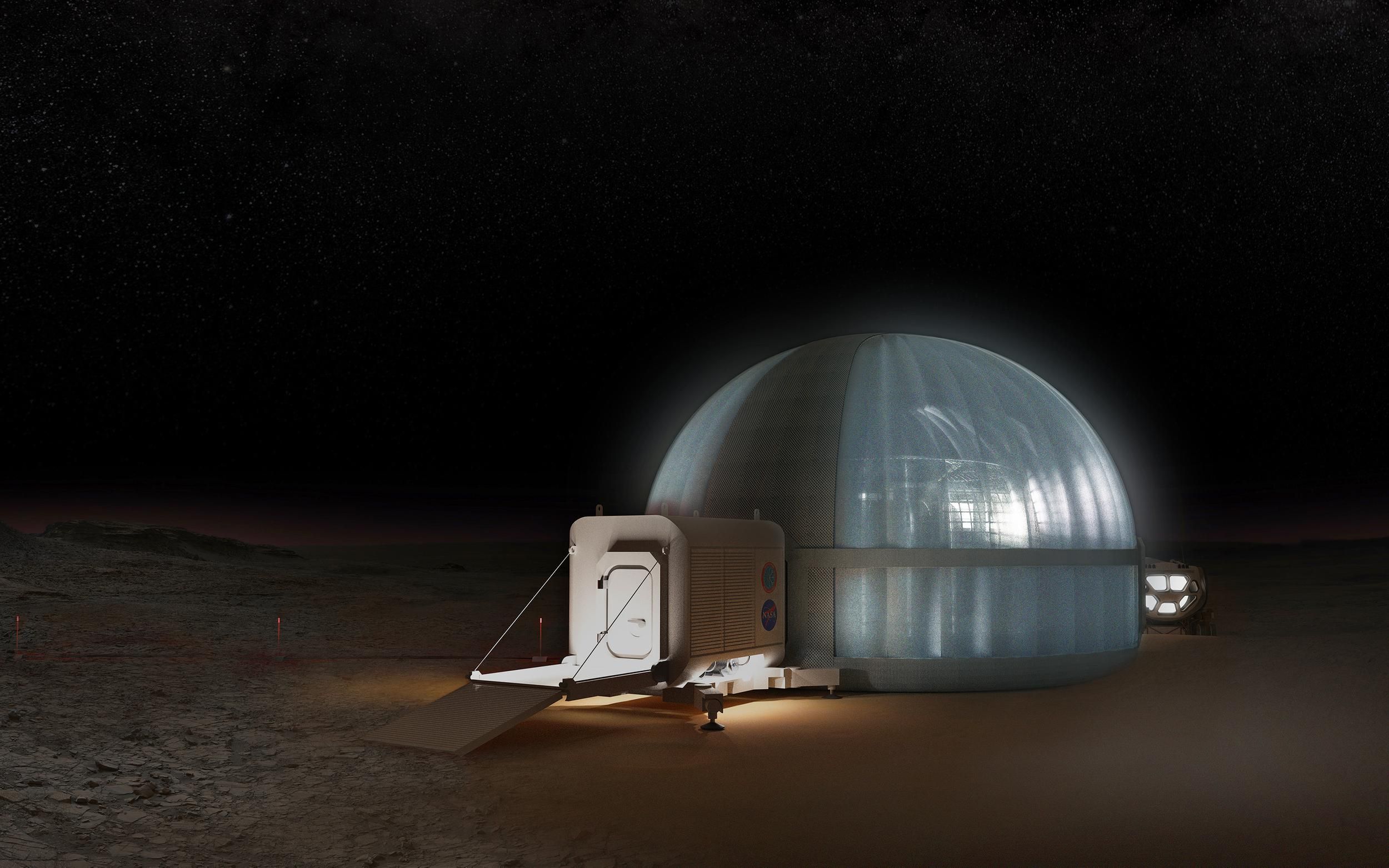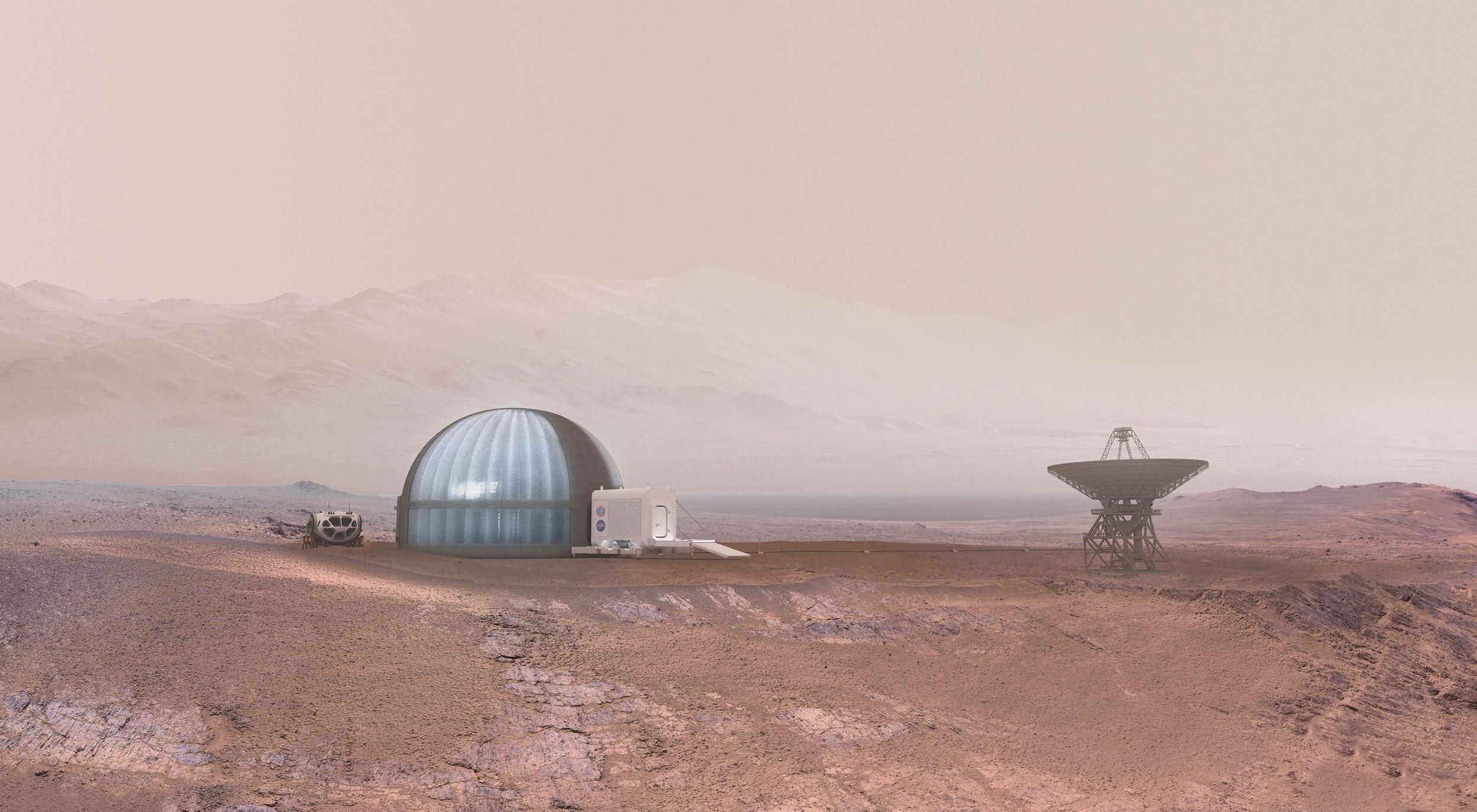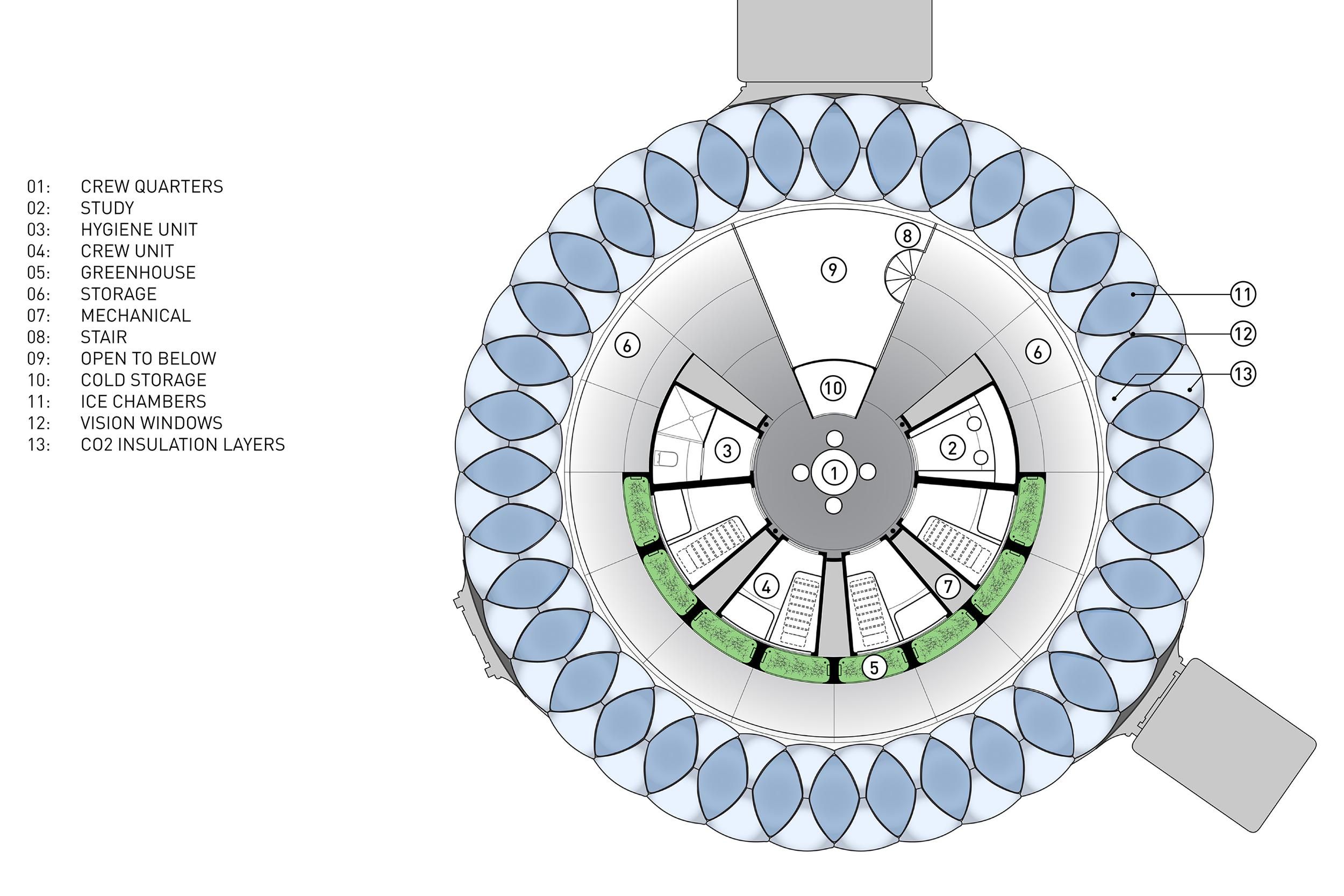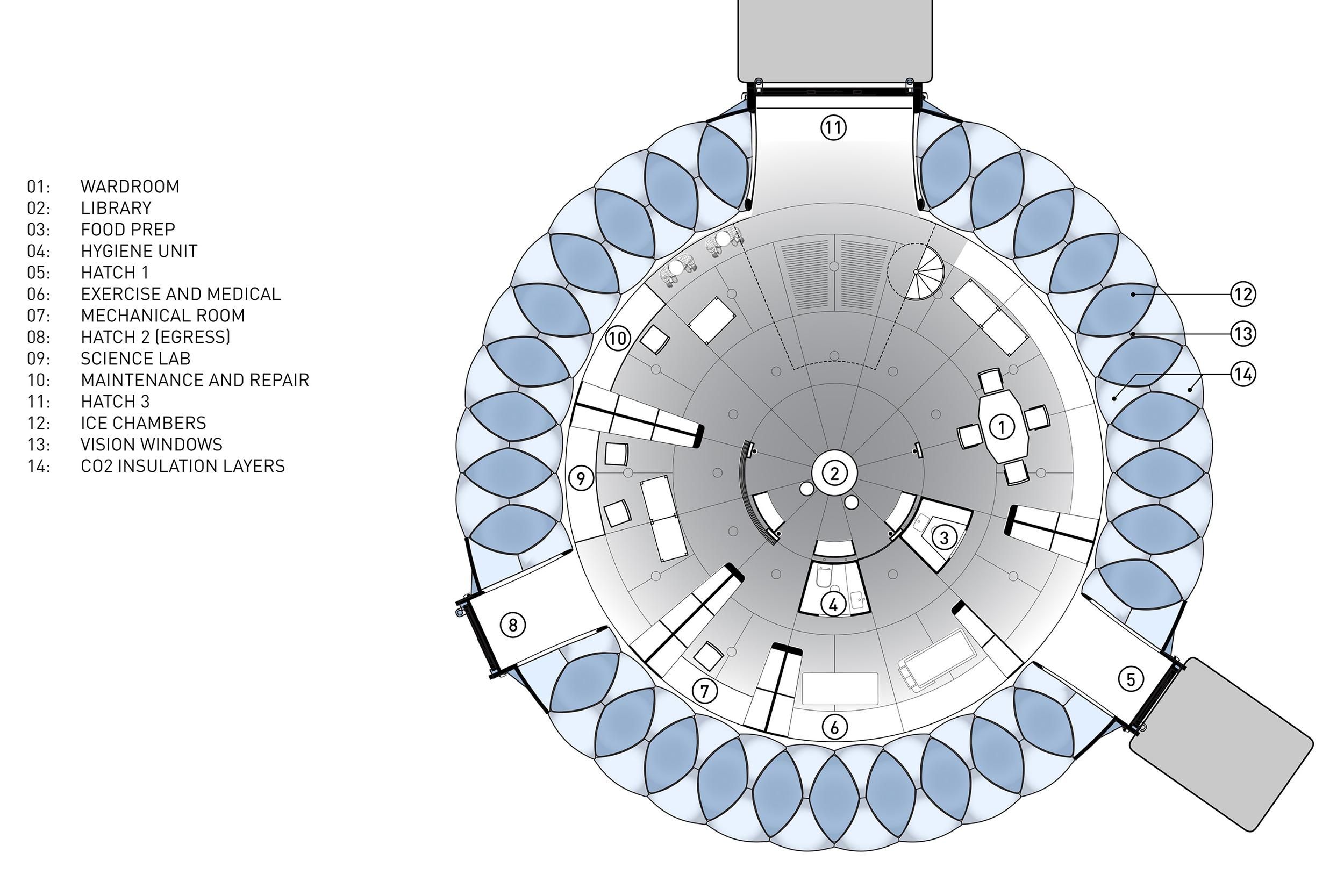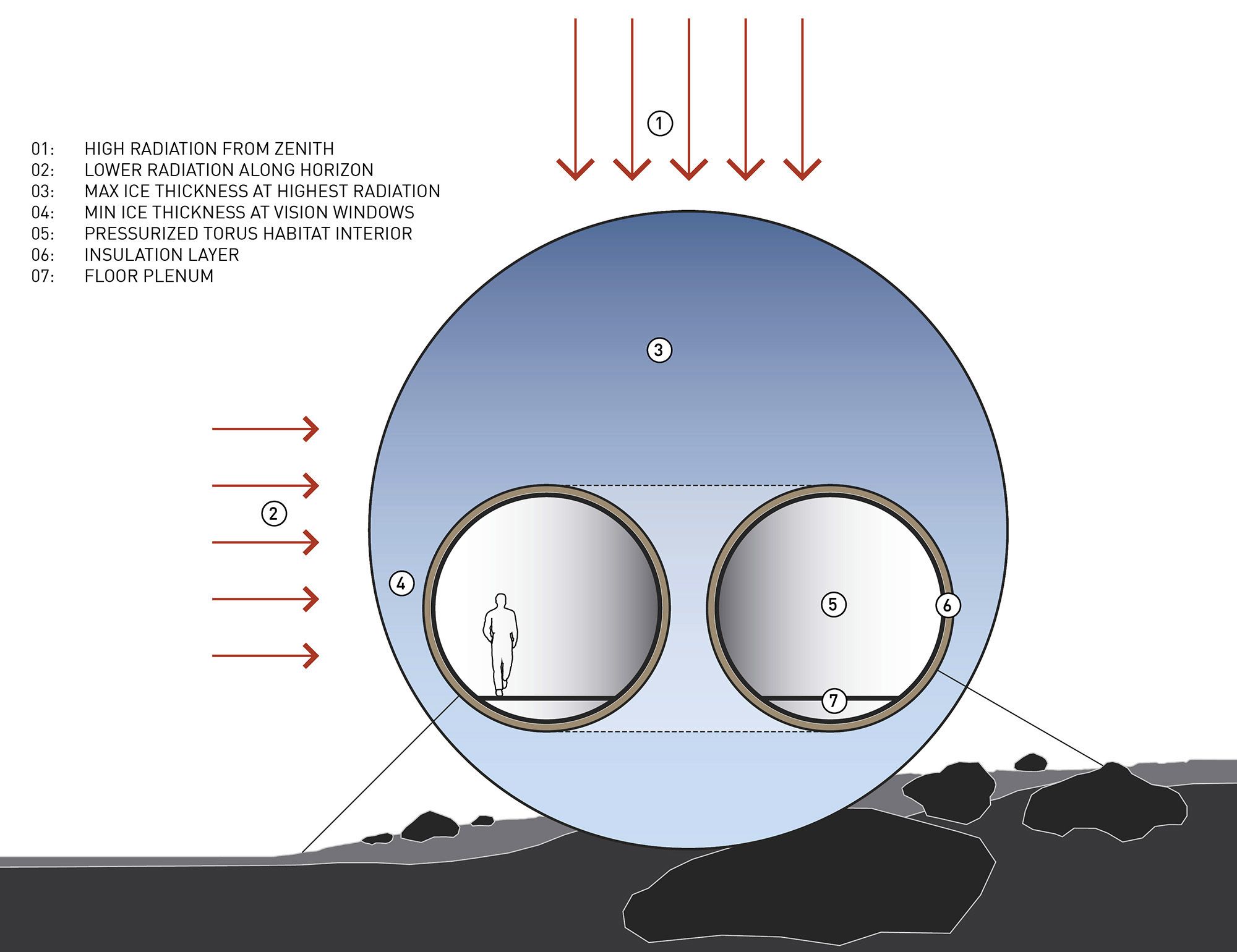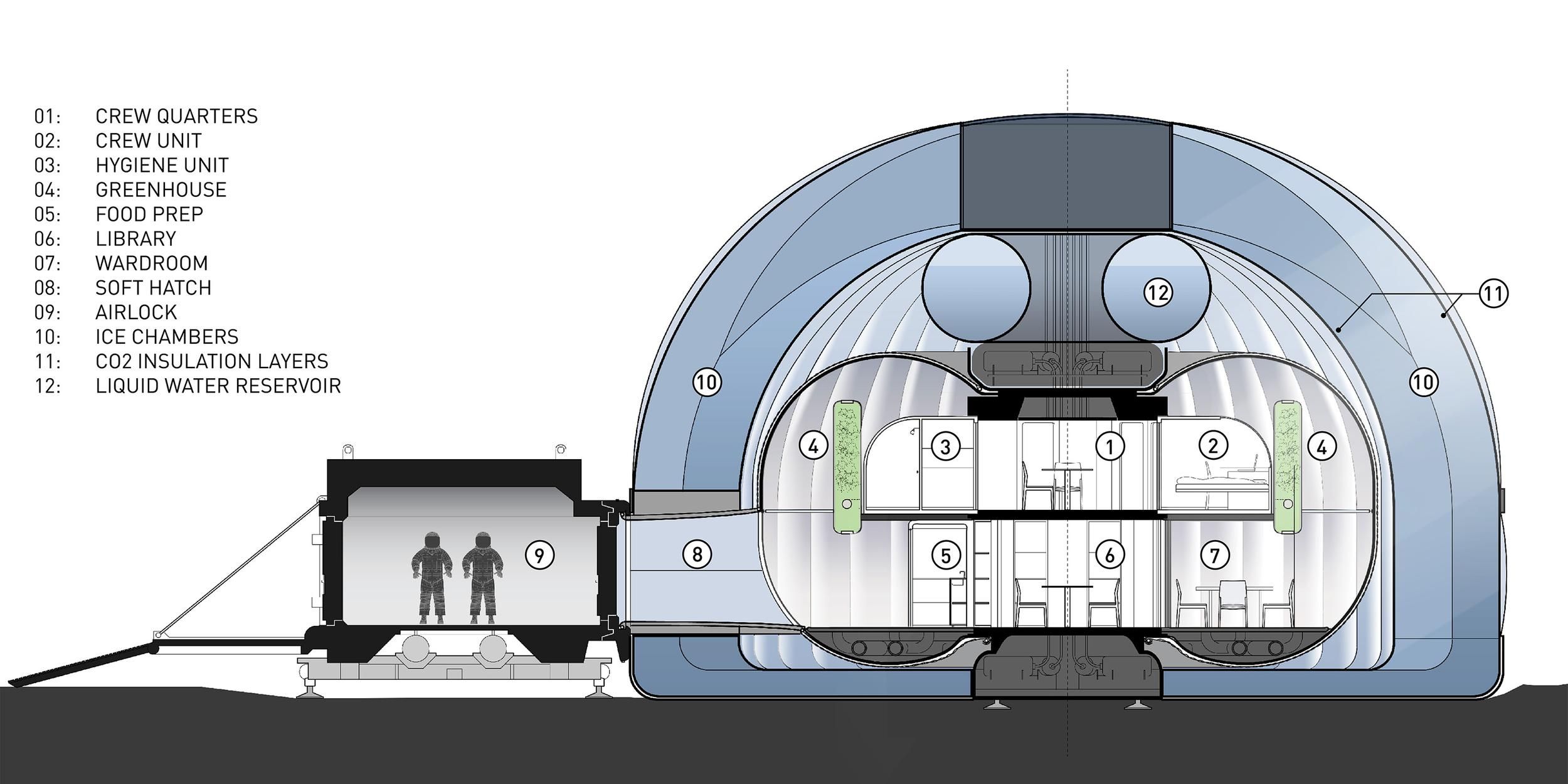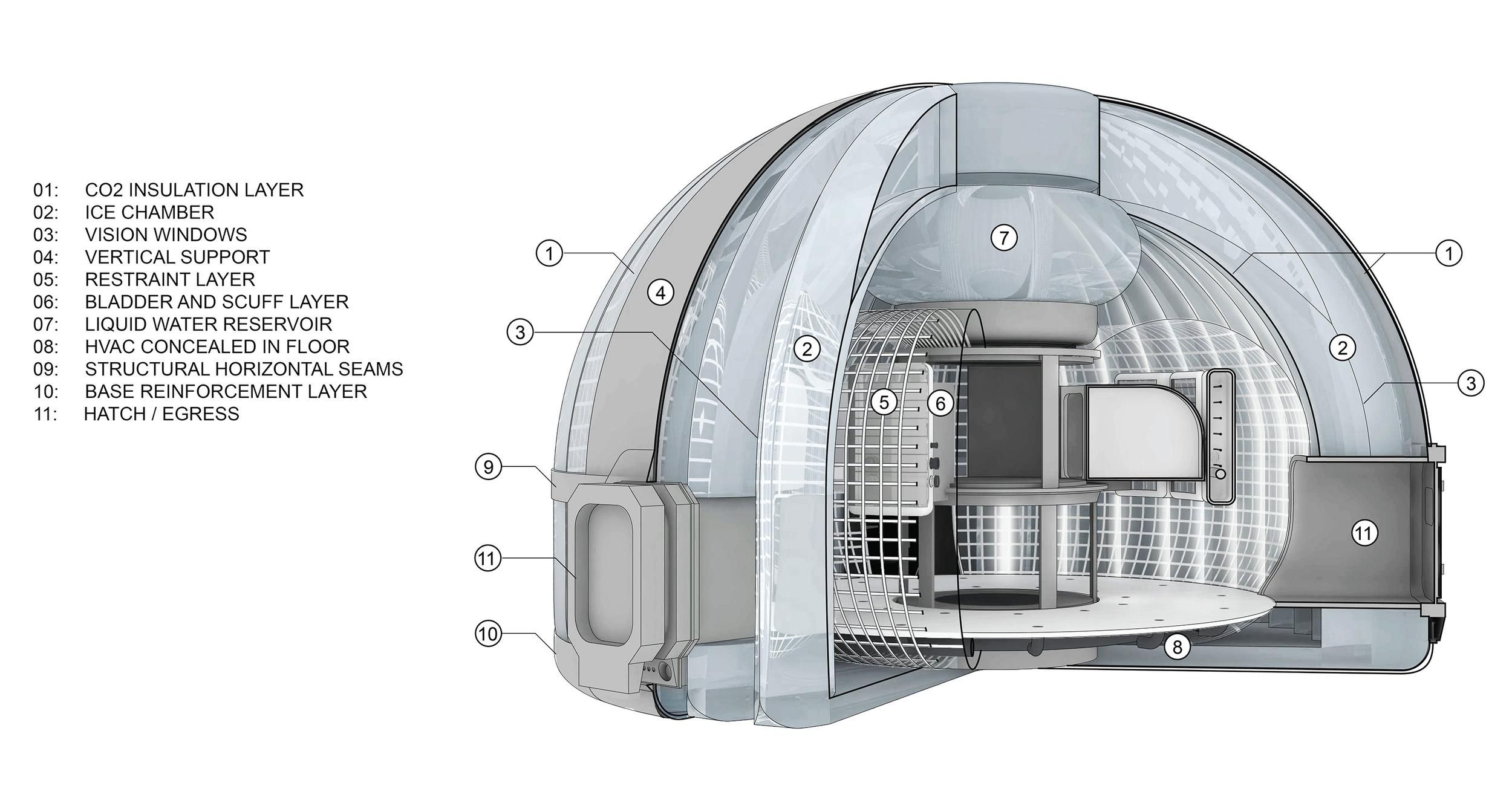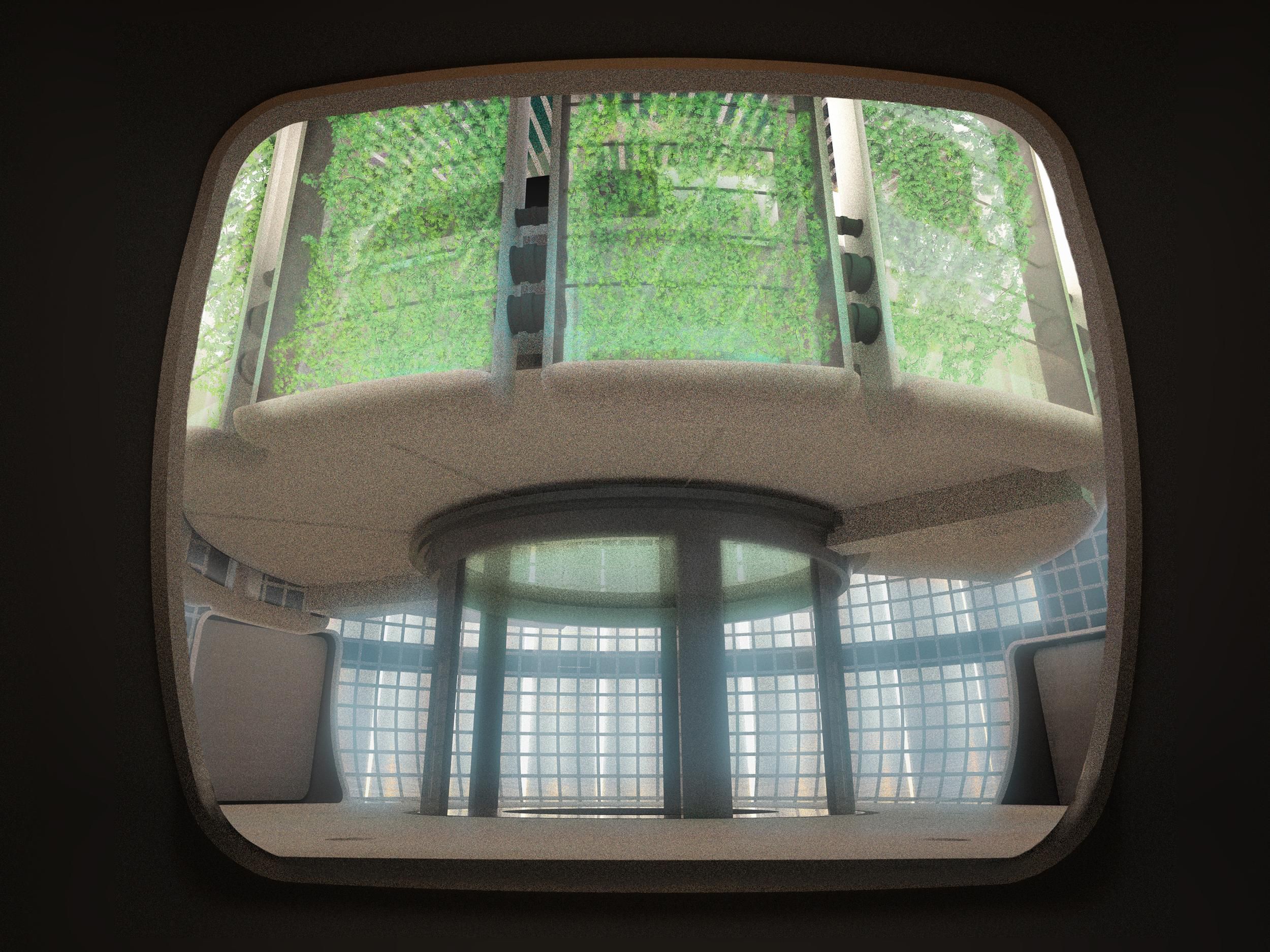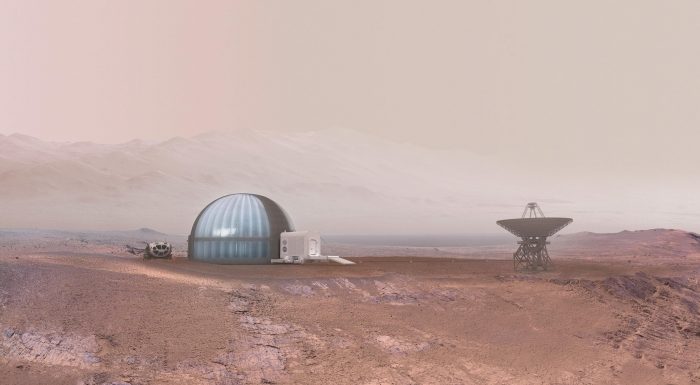The Mars Ice House
Following the contest NASA has launched last year – the 3D Printed Habitat Challenge Design Competition, on September 27th, during the New York Maker Faire, the top three winners were announced. Using local resources and the various technological possibilities that 3D printing has to offer, the participants were challenged to create original architectural approaches for a habitat on Mars. The Mars Ice House, by Team Space Exploration Architecture and Clouds Architecture Office, was awarded first place. The major problem everyone faces when thinking about building on Mars is the high level of radiation on the surface of the planet. This is the reason why, until now, most of the proposals envisioned for this place were for the underground, which is said to contain certain substances that are not so good for human health. The Mars Ice House’s concept solves both of these problems. Using the technology of 3D printing with ice, the team has proposed a “mountain” design for the competition. The building had an outer shell made of ice, in order to stop the radiation from entering, and at the same time to allow diffuse light to enter. The ice would be contained in a transparent – inflatable ETFE membrane, to keep it from disintegrating into this new atmosphere. The below freezing point temperatures on Mars would ensure that the ice won’t melt all year round.
The Technology of this proposal would imply the prefabricated core module to be shipped entirely to Mars. Upon landing, the first stage would be printing the foundation. After installing itself on the Martian surface, the ETFE membrane would be inflated, creating a pressurized atmosphere around the module. This membrane is a crucial part of the design since it’s the one that will be holding together the future outer shell. In the next phase, several bots would be released inside the shell, that would start printing with a “composite of water, fiber and aerogel along with layered rings, printing a spectacular light-emitting lenticular form that is structurally sound, insulated and translucent”. Another translucent layer of the printing substance would be printed to form an inner shell around the module. An insulating layer of the inner shell would ensure a good living temperature, without melting the ice shells. The module has private and communal spaces, that are developed on several floors. A hydroponic garden inside the habitat would ensure the oxygen needed for human lives. The space between the inner and the outer shell is a buffer. People would be able to walk into the “martian atmosphere” without having to wear special suits, which would also “assure that the Martian atmosphere will remain uncontaminated by human use”. The last phase of the Mars Ice House project would be the arrival of the crew.
By Cristina Juc
